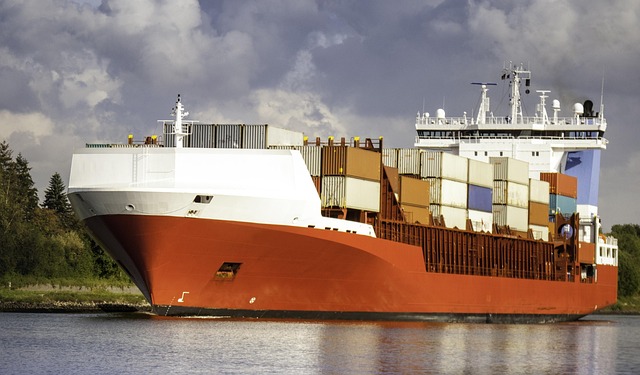Shipping container size significantly impacts payload capacity and operational efficiency. Standard 20ft and 40ft containers offer versatility, while high cube variants cater to vertical space requirements. Specialized types like refrigerated, flat rack, open top, and modular containers provide tailored functionalities for diverse shipping needs. Choosing the right size based on interior dimensions, door sizes, height restrictions, and cargo type (as per size guides) ensures optimal utilization of space and adheres to ISO safety standards.
In the world of logistics, understanding shipping container sizes is paramount to optimizing payload capacity. This article delves into the significant impact of container dimensions on freight transportation, focusing on the advantages of large footprint containers. We explore factors influencing payload capacity and provide insights on how to maximize space for efficient loading. By understanding these key considerations related to shipping container size, businesses can navigate the logistics landscape more effectively.
- Understanding Container Sizes and Their Impact
- Factors Affecting Payload Capacity
- Large Footprint Containers: Advantages
- Optimizing Space for Maximum Load
Understanding Container Sizes and Their Impact

Choosing the right shipping container size is a critical factor in maximizing payload capacity and overall efficiency. Understanding the various dimensions, from exterior and interior space to door sizes and height, is essential when navigating the world of shipping containers. Each container size offers unique advantages tailored to specific cargo needs.
For instance, standard 20ft and 40ft shipping containers are popular choices due to their versatility and availability. However, for specialized goods requiring more vertical space, high cube containers like the 20ft and 40ft high cubes provide increased interior height without altering the overall footprint. Other container types, such as refrigerated, flat rack, open top, or modular containers, offer specific functionalities for unique shipping requirements, further emphasizing the impact of container size on payload potential.
Factors Affecting Payload Capacity

When considering the payload capacity of a shipping container, several factors come into play, each impacting the maximum load it can carry. One of the primary determinants is the shipping container size. Containers vary in length, width, and height, with standard sizes including the 20ft, 40ft, and high cube variants, offering different interior shipping container size and floor space size to accommodate various cargoes.
The exterior size, door dimensions, and height of the shipping container also play a crucial role. For instance, larger containers like the 40ft and high cube models provide more usable space due to their increased length and height, enabling them to carry heavier or greater volumes of cargo compared to smaller containers like the 10ft or 8ft sizes. Additionally, specific container types such as refrigerated, flat rack, open top, and modular containers have unique dimensions and purposes, further influencing payload capacity based on their designed functionality.
Large Footprint Containers: Advantages

Large footprint containers, especially those with dimensions like the 20ft and 40ft shipping container sizes, offer significant advantages in maximizing payload capacity. These standard ISO shipping container sizes provide ample interior space, enabling efficient cargo loading and unloading. The 40ft high cube shipping container size, for instance, boasts a larger usable floor space compared to its 20ft counterpart, allowing for increased load volume.
This advantage is further amplified by the versatility of these containers’ dimensions, such as the 9ft6in high cube container or even the specialized sizes like refrigerated, flat rack, open top, and modular containers. The shipping container size chart and guide readily available for both metric and imperial measurements ensure that shippers can choose the optimal container based on their specific needs. This customization not only accommodates diverse cargo types but also enhances overall logistics efficiency.
Optimizing Space for Maximum Load

Optimizing space within a shipping container is key to maximizing payload capacity. The interior dimensions of a standard container, such as a 20ft or 40ft high cube, are carefully designed to accommodate various cargo while maintaining efficient floor space. For instance, a 20ft shipping container has an exterior size of approximately 6.1m (20 ft) in length, 2.44m (8 ft) in width, and 2.59m (8.5 ft) in height, offering a usable interior volume of around 33 cubic meters. Similarly, the 40ft container expands these dimensions to roughly 12.2m (40 ft) in length, providing nearly triple the floor space for cargo placement.
Choosing the right container size is crucial, considering factors like shipping container door sizes, height and width restrictions, as well as the type of cargo being transported—refrigerated containers, flat rack containers, or open tops, each with specific requirements. A comprehensive shipping container size guide should account for these variations, enabling shippers to select the most suitable container for their needs, ultimately ensuring maximum payload without compromising on structural integrity and safety standards, such as those set by ISO regulations.
Shipping containers, with their diverse sizes, play a pivotal role in global logistics. Understanding the impact of container dimensions on payload capacity is essential for optimizing transport efficiency. By examining factors like length, width, and height, we uncover the advantages of large footprint containers for accommodating maximum payloads. Through efficient space optimization techniques, these containers revolutionize cargo transportation, ensuring businesses can maximize their load potential while navigating the complexities of modern supply chains.
